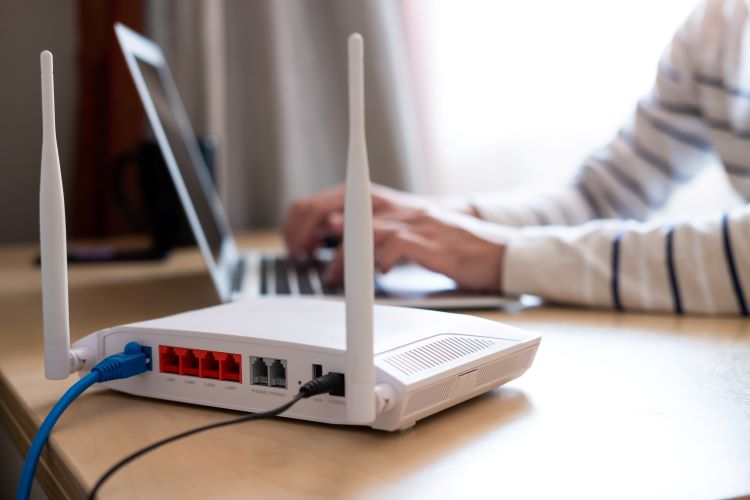Finding the Best Internet in the USA: Your Guide to Speed, Prices, and Providers for 2025
In today's digital age, having reliable and fast internet is more crucial than ever. As we look ahead to 2025, the landscape of internet providers in the USA continues to evolve, offering consumers a wide array of options. This comprehensive guide will help you navigate the complex world of internet services, ensuring you find the best provider for your needs.

How Do You Find Internet Providers Available at Your Address?
Finding internet providers in your area is the first step towards securing a reliable connection. Start by using online tools provided by the Federal Communications Commission (FCC) or third-party websites that aggregate provider information. These tools allow you to input your address and receive a list of available providers. Additionally, you can contact local providers directly or ask neighbors about their internet service experiences.
Remember that availability can vary significantly, even within the same city or neighborhood. Some areas may have multiple options, including fiber, cable, and 5G, while others might be limited to satellite or DSL connections.
Understanding Internet Types: Fiber vs. Cable vs. 5G
The type of internet connection you choose can significantly impact your online experience. Let’s break down the main types:
Fiber: Offers the fastest and most reliable connection, using fiber-optic cables to transmit data at light speed. It provides symmetrical upload and download speeds, making it ideal for high-bandwidth activities like streaming 4K video or online gaming.
Cable: Utilizes the same coaxial cables as cable TV, offering high speeds and wide availability. While generally reliable, speeds can fluctuate during peak usage times in your neighborhood.
5G: The latest in wireless technology, 5G home internet is becoming increasingly available. It offers high speeds comparable to fiber in some areas, with the added benefit of mobility and easy setup.
Each type has its strengths and limitations, so consider your specific needs when choosing.
What Internet Speed Do You Actually Need?
Determining the right internet speed for your household depends on several factors, including the number of connected devices and your online activities. Here’s a general guide:
-
25 Mbps: Suitable for light use (email, web browsing) for 1-2 people
-
50-100 Mbps: Good for streaming HD video and online gaming for 2-4 people
-
100-200 Mbps: Ideal for 4K streaming and multiple users
-
200+ Mbps: Best for large households with heavy internet usage
Remember, these are estimates, and your actual needs may vary. Consider future-proofing your connection by opting for slightly higher speeds than you currently need.
How Can You Lower Your Monthly Internet Bill?
Reducing your internet costs doesn’t mean sacrificing quality. Here are some strategies to consider:
-
Bundle services: Many providers offer discounts when you combine internet with TV or phone services.
-
Negotiate with your provider: Call and ask about current promotions or loyalty discounts.
-
Consider switching providers: Competition can lead to better deals for new customers.
-
Look for low-income programs: Many providers offer discounted rates for eligible households.
-
Buy your own modem and router: This can save you monthly rental fees.
Comparing Major Internet Providers in the U.S.
To help you make an informed decision, let’s compare some of the major internet providers in the United States:
| Provider | Type | Max Speed | Key Features | Estimated Monthly Cost |
|---|---|---|---|---|
| Xfinity | Cable/Fiber | Up to 2000 Mbps | Wide availability, Flex streaming box | $30 - $300 |
| AT&T | Fiber/DSL | Up to 5000 Mbps | No data caps on fiber plans | $55 - $180 |
| Verizon Fios | Fiber | Up to 940 Mbps | Symmetrical speeds, no contracts | $50 - $90 |
| Spectrum | Cable | Up to 1000 Mbps | No data caps, free modem | $50 - $110 |
| T-Mobile Home Internet | 5G/4G LTE | 35-115 Mbps | No contracts, equipment included | $50 |
Prices, rates, or cost estimates mentioned in this article are based on the latest available information but may change over time. Independent research is advised before making financial decisions.
When comparing providers, consider factors beyond just speed and price. Look at customer service ratings, data caps, contract terms, and additional fees. Some providers may offer perks like free streaming subscriptions or Wi-Fi hotspot access, which could add value to your plan.
In conclusion, finding the best internet provider in the USA for 2025 requires careful consideration of your specific needs, budget, and available options. By understanding the different types of internet connections, assessing your speed requirements, and comparing providers, you can make an informed decision that ensures a reliable and efficient online experience for years to come. Remember to regularly review your internet plan and explore new options as the market evolves and new technologies emerge.




